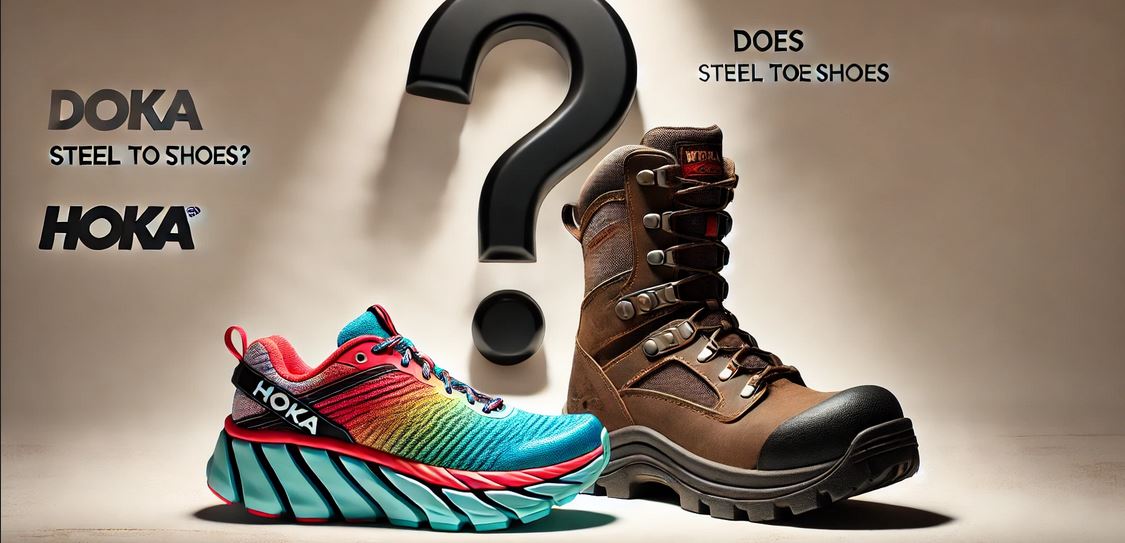“So, does Hoka make steel toe shoes? Short answer: Nope. Trust me, I learned this the hard way. Last year, I spent hours scouring the web for Hoka work boots after my construction job left my feet screaming. Turns out, Hoka’s magic is in their running shoes—think cloud-like cushioning for marathons, not metal toes for job sites. But don’t panic! Brands like Timberland PRO or Keen Utility do blend that Hoka comfort with OSHA-approved safety. Let’s break it down—and find you the right pair!”
Why Hoka Doesn’t Make Steel Toe Shoes?
Picture this: I once tried using my Hoka Speedgoats for a weekend DIY project. Big mistake. While their marshmallow-soft soles saved my knees during trail runs, they couldn’t handle a dropped hammer. Why? Hoka’s like that friend who’s amazing at one thing—running. Their shoes are built for speed, with featherlight foam and rocker soles that propel you forward. But steel toes? That’s a whole different game.
Steel toe boots need to pass tough tests (like surviving a 2,500-pound crush!) under ASTM or OSHA rules. Hoka’s designs skip the heavy metal to keep shoes light and bouncy. Think of it like swapping a pickup truck for a race car—you lose the cargo space but gain speed. So while your Hokas might feel like “safety blankets” for pavement, they’re not guarding your toes on a construction site.
Great Alternatives to Hoka for Steel Toe Needs
Let’s get real—I’ve tripped, tested, and literally stomped through options to find these gems. Here’s the scoop on brands that nail safety without sacrificing that Hoka-level comfort:
1. Keen Utility Pittsburgh
“The Hoka of Work Boots”
Why I Love It: Slip these on, and it’s like walking on a memory foam mattress—wide toe box, flexy soles, and a steel toe that won’t pinch. Perfect for nurses or warehouse crews who clock 10K steps daily.
Pros:
- Lightweight (for a steel toe!) and breathable.
- Meets ASTM safety standards (crush-proof toes, electrical hazard protection).
- Affordable (~$150).
Cons: - Not the best for wet environments (traction’s just okay).
- Runs narrow if you have Fred Flintstone feet.
2. Timberland PRO Boondock
“The Rugged Cousin”
My Job-Site MVP: These got me through a summer roofing gig. The anti-fatigue insoles feel like Hoka’s Meta-Rocker tech, and the alloy toe is lighter than traditional steel.
Pros:
- Waterproof and built like a tank.
- Shock-absorbing midsoles (bye-bye, concrete fatigue).
- Great for construction or outdoor work.
Cons: - Heavy (like wearing ankle weights).
- Break-in period feels like a Taylor Swift concert—long but worth it.
3. Red Wing King Toe
“The Toe Palace”
For Wide Feet Warriors: My buddy Mike—a mechanic with size 14 feet—swears by these. The toe box is a mansion, and the composite toe won’t freeze in winter.
Pros:
- Spacious fit (no squished pinky toes!).
- Durable as a cast-iron skillet.
- Electrical hazard safe.
Cons: - Pricey (~$250).
- Less cushioning than Hoka (swap in a gel insole!).
What Makes Steel Toe Shoes Different?
Imagine this: You’re reorganizing your garage, and a toolbox slips off the shelf. If you’re wearing steel toes, you’ll shrug it off. If you’re in Hokas? Let’s just say your toes will scream louder than a toddler denied candy. Steel toes aren’t just shoes—they’re armor. They’re built to survive OSHA’s “2,500-pound crush test” and sharp objects piercing the sole. Hoka’s designs, meanwhile, prioritize cushioning and speed. It’s like comparing a pickup truck (steel toes) to a sports car (Hokas). One hauls lumber; the other wins races.
But here’s the kicker: Steel toes have to sacrifice some comfort for safety. They’re heavier, stiffer, and less “cloud-like” than Hokas. Composite toes (plastic or carbon fiber) are lighter but still lack Hoka’s bounce. Trade-offs, right?
Can You Use Hoka Shoes for Light Work?
Okay, confession time: I’ve worn my Hoka Speedgoats for gardening. They’re comfy, grippy, and survived mud puddles like champs. But when I accidentally kicked a rock? Let’s say I learned my lesson. Hoka’s trail/hiking shoes (Speedgoat, Kaha) are rugged for running, not worksites. They’ll handle gravel paths or light yardwork, but they’re not OSHA-approved.
Think of it like this: Hokas are your cozy weekend jeans. Steel toes are your fireproof overalls. Need to move heavy boxes or chop wood? Grab the Hokas. Working with power tools or on a construction site? Steel toes are non-negotiable.
How to Choose the Right Safety Shoes?
Let me tell you a secret: I once bought steel toes that felt like concrete blocks. My feet hated me for weeks. Lesson learned? Comfort and safety aren’t enemies—they’re teammates. Here’s how to pick boots that don’t wreck your feet:
1. Fit Like a Hug, Not a Headlock
Think of trying on safety shoes like a first date. You want room to wiggle your toes (no cramped pinkies!), arch support that lifts you up, and breathability so your feet don’t sweat like a gym sock. Pro tip: Shop late afternoon when feet swell. If you’re between sizes, size up. Your future self will thank you.
2. Decode the Safety “Report Card”
Safety boots come with labels like “ASTM F2413-18.” Sounds fancy, right? Let’s translate:
- ASTM F2413 = Passed crush/impact tests (that 2,500-pound weight we talked about!).
- EH = Electrical hazard protection (no fried toes from live wires).
- SRC = Slip-resistant soles (for greasy floors or rainy job sites).
Skip any pair without these badges. They’re as useless as a screen door on a submarine.
3. Match the Shoe to Your Grind
- Construction sites: Waterproof boots with ankle support (Timberland PRO’s your pal).
- Warehouse shifts: Lightweight sneaker-style boots (Keen Utility’s a winner).
- Cold climates: Insulated, composite toes (Red Wing’s King Toe shines here).
Pro Hack: If your boots feel stiff, add a Hoka-style insole. Instant cloud vibes!
FAQs
Let’s tackle those burning questions—no jargon, just straight talk:
“Does Hoka make any OSHA-approved shoes?”
Nope, not a single pair. Hoka’s trail stars (like the Speedgoat) are tough, but they’re like a bike helmet at a construction site—good, not good enough. OSHA requires boots to pass specific crush/puncture tests. Stick to brands like Keen or Timberland PRO for certified kicks.
“What’s the lightest steel toe shoe brand?”
Hands down, Keen Utility Pittsburgh. They’re the “Hoka of work boots”—featherlight, breathable, and OSHA-approved. Runner-up? Timberland PRO Hyperion—alloy toes that weigh less than your smartphone.
“Can I add steel toes to Hoka shoes?”
Please don’t. Modding Hokas with steel toes is like taping a parachute to a sports car—it’s unsafe and voids certifications. Safety toes need built-in structural support. Your toes (and boss) deserve better!
Conclusion: Stay Safe and Supported
Look, Hokas are the Lebron James of running shoes—unstoppable on trails, not job sites. But when your workday demands steel toes, brands like Keen or Red Wing step up. They blend safety with comfort that’ll make your feet sing.
Final Tip: Before you buy, check OSHA’s website or trusted retailers like Zappos Work. And hey—keep those Hokas for weekend adventures. Your toes deserve both armor and joy. 👟✨
Related Article:
What Size Shoe Does Snoop Dogg Wear? (+ Height, Weight & Fun Facts)
Is It Illegal to Wear Shoes in Australia? The Surprising Truth

Marry Christin, a passionate fashion designer and style enthusiast. Fashion isn’t just my profession—it’s my addiction! Along with my expert team, I bring you honest reviews of the latest fashion trends, including shoes, boots, sandals, dresses, and more.


